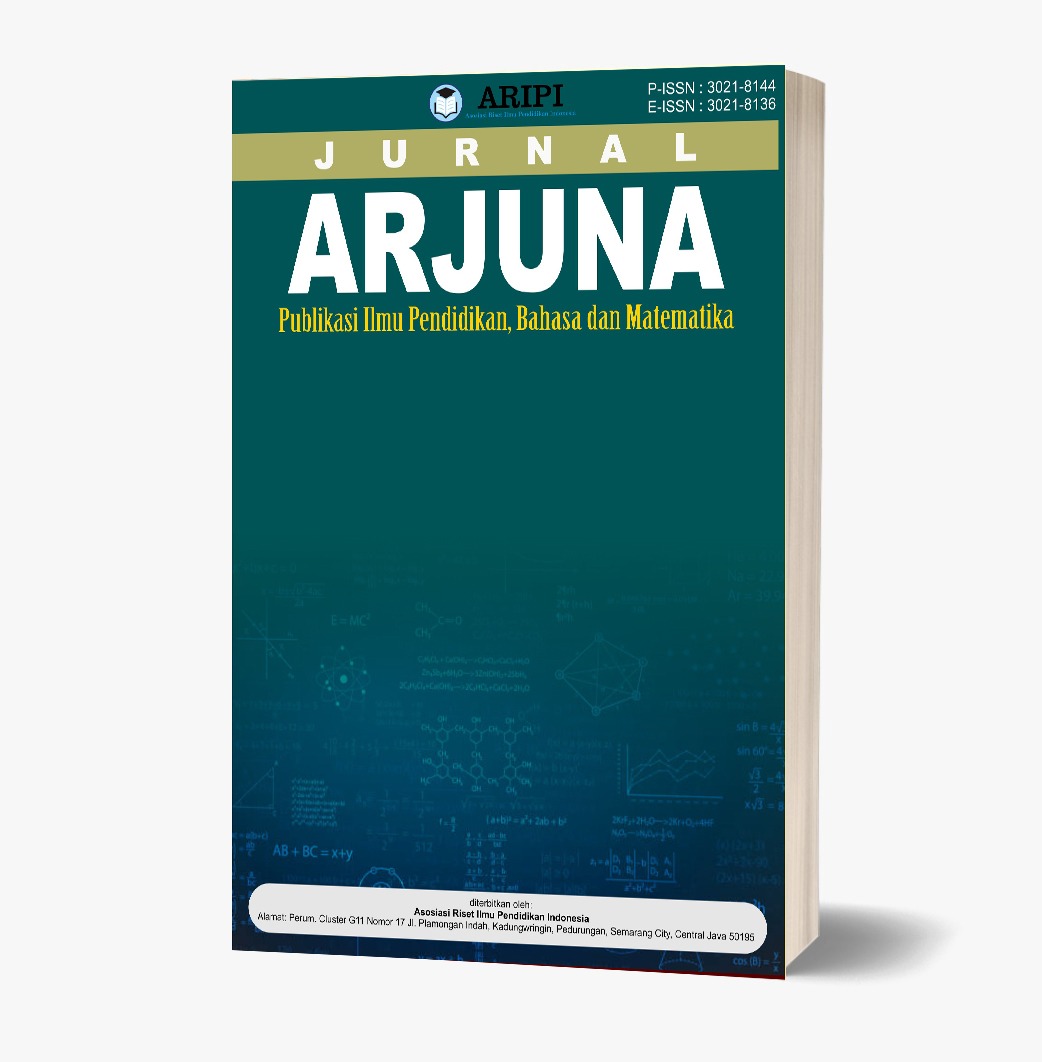Miskonsepsi Materi Fungi (Jamur) pada Buku Biologi Kelas X SMA/MA
DOI:
https://doi.org/10.61132/arjuna.v2i5.1186Keywords:
Misconceptions, Fungi, BiologyAbstract
A variety of biology texbooks have been published in order to include regulatory demands and educational needs. So this research aims to identify misconceptions that exist in the material, fungi (fungi) in the revised 2013 curriculum class X Biology book, so that existing misconception are realized by teachers as educators, as well as the public in general. The type of research cerried out in this research is quantitative descriptive research in the form of identification, classification and descriptive analysis of misconceptions on material concepts, fungi (fungi) found in class X high school biology open books. This research was carried out from April to June 2024, book what is explained in this research is the biology high school book published by erlangga. The content of the material contained in the book being analyzed is appropriate because the book contains groupings of fungi based on reproductive characteristics and relatings them to everyday life. But there are still some misconceptions such as the difference between higher plants, and plants, levels low, fungal body shape, fungal classification, lichen reproduction and thallus morphologi in lichen.
Downloads
References
Alexopoulos, C. J., Mims, C. W., & Blackwell, M. (1996). Introductory mycology (4th ed.). John Wiley & Sons.
Anonimus. (2012). The British Lichen Society - Promoting the study, enjoyment and conservation of lichens. London: The British Lichen Society.
Beaching, S. Q., & Hill, R. (2007). Guide to twelve common & conspicuous lichens of Georgia’s Piedmont. University of Georgia Atlanta (UGA).
Berbee, M. L., & Taylor, J. W. (2001). Fungal molecular evolution: Genetrees and geologic time. In D. J. McLaughlin, E. G. McLaughlin, & P. A. Lemke (Eds.), The Mycota (Vol. 7, pp. 229-242). Springer-Verlag.
Bianciotto, V., et al. (1989). Germination process and hyphal growth of vesicular-arbuscular mycorrhizal fungus. Alionia.
Brundrett, M. C., et al. (1996). Working with mycorrhizas in forestry and agriculture. Australian Centre for International Agricultural Research.
Campbell, N. A. (2012). Biologi (8th ed.). Erlangga.
Cavalier-Smith, T. (1998). A revised six-kingdom system of life. Biological Reviews, 73(3), 203-266.
Gutjahr, C. (2014). Phytohormone signaling in arbuscular mycorrhiza development. Journal of Plant Biology, 20(26-34).
Heza, A. Y. Y. (2021). Modul pembelajaran taksonomi tumbuhan rendah (Pteridophyta) (Undergraduate thesis). UIN Raden Intan Lampung.
Hibbet, D. S., Binder, M., Bischoff, J. F., Blackwell, M., Cannon, P. F., et al. (2007). A higher level phylogenetic classification of the fungi. Mycological Research, 111(5), 509-547.
James, W. D., Berger, T., & Elston, D. M. (2006). Andrews’ diseases of the skin: Clinical dermatology. Saunders Elsevier.
Khairuna. (2023). Reproduksi dan embriologi tumbuhan. Perdana Publishing.
Kurtzman, C. P., & Fell, J. W. (1998). The yeast: A taxonomic study. Elsevier.
Moore-Landecker, E. (1990). Fundamentals of the fungi (4th ed.).
Priadi. (2010). Biologi: SMA kelas X. Yudhistira.
Redhead, J. F. (1977). Endotrophic mycorrhiza in Nigeria: Species of Endogonaceae and their distribution. Federal Department of Forestry, Ibadan-Nigeria.
Roosheroe, I. G., Sjamsuridzal, W., & Oetari, A. (2006). Mikologi dasar dan terapan. Yayasan Pustaka Obor Indonesia.
Schüssler, A., Schwarzott, D., & Walker, C. (2001). A new fungal phylum, Glomeromycota: Phylogeny and evolution. Mycological Research, 105(11), 1413-1421.
Setyowati, E. (2020). Lichens di Jawa Timur. Akademia Pustaka.
Smith, S. E., & Read, D. J. (1997). Mycorrhizal symbiosis (2nd ed.).
Suriawiria, U. (2006). Budidaya jamur tiram. Kanisius.
Suryani, Y., Taupiqurrahman, O., & Kulsum, Y. (2020). Mikologi. PT. Freeline Cipta Granesia.
Syahrial. (2021). Keanekaragaman lichenes di kawasan Cru Sampoinet Kabupaten Aceh Jaya (Skripsi). UIN ar-Raniry Darussalam Banda Aceh.
Tjitrosoepomo, G. (2009). Taksonomi tumbuhan: Schizophyta, Thallophyta, Bryophyta dan Pteridophyta. UGM Press.
Tortora, G. J., Funke, B. R., & Case, C. L. (2010). Microbiology. Benjamin Cummings.
Ulfa. (2017). Botani Cryptogamae. Perdana Publishing.
Downloads
Published
How to Cite
Issue
Section
License
Copyright (c) 2024 Jurnal Arjuna : Publikasi Ilmu Pendidikan, Bahasa dan Matematika

This work is licensed under a Creative Commons Attribution-ShareAlike 4.0 International License.







